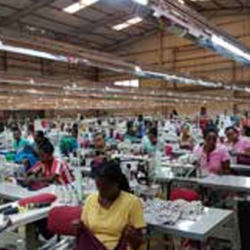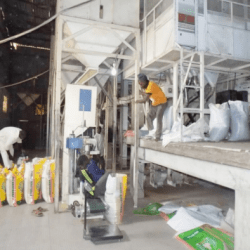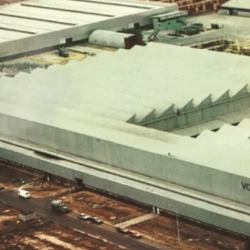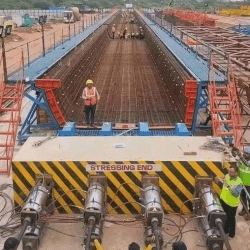Onah Samuel Adakole
Abel John Ejila
In tecent times, they have been efforts to adopt additive
manufacturing in Nigeria, however, Benue state has not been
engaged most notably in the industrial adoption of this
technology. Additive Man5ufacturing is the new paradigm in
the manufacturing industry which is revolutionizing the
industrial landscape. This change looks at new engineering,
management, science, technology, and innovation skills to
fully harness the benefits offered by this advanced process of
technology for sustainable development. The current status of
industries in Benue State calls for an introduction of training
programs to equip engineers with contemporary skill sets in
additive manufacturing for improved design, production and
manufacturing, and management. Hence, additive
manufacturing technology should be adopted and exploited to
bridge the current gaps for the Engineers, Students and
Graduates to be relevant in the 21st century and positively
contribute to the inclusive socioeconomic development of the country.
Additive manufacturing (AM), which is also known as 3-
Dimentional (3D) printing, is a manufacturing process that
produces objects in layer upon layer, by joining materials
from computer aided design (CAD). This virtual design
turns digital 3D models to solid objects [2, 3, 4].
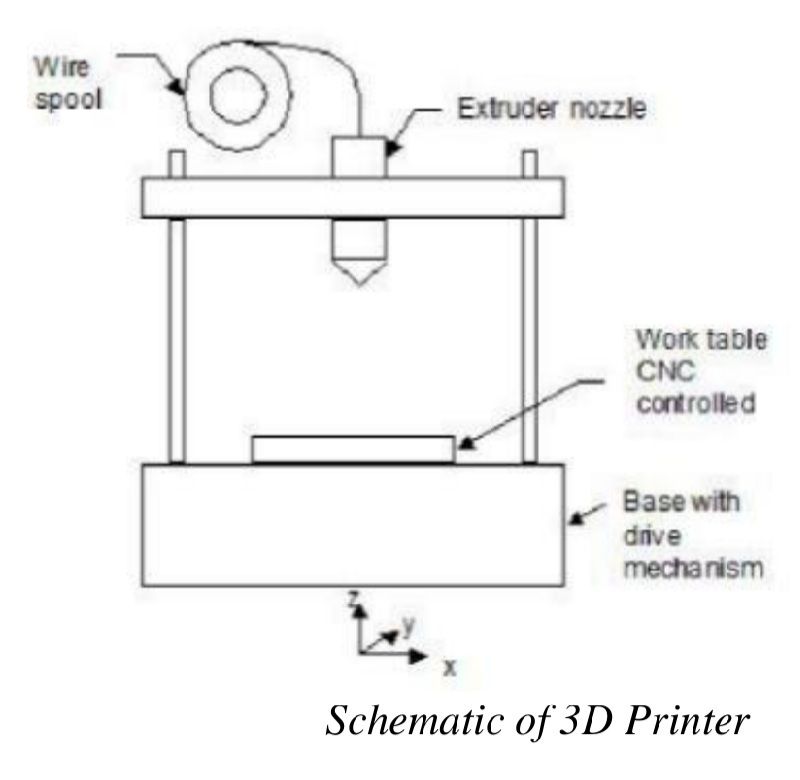
AM technology is having an additive nature because it is considered an environmentally friendly process and and does not create waste unlike the other manufacturing methods which are subtractive in nature because they involve operations such as drilling, milling,
grinding etc. that remove materials from the work piece to
achieve their designed shape [5, 6]. As this new technique
evolves, it is projected to show a remarkable impact in the
manufacturing sector. AM brands the industry with recent
design flexibility and reduces the use of energy which helps to
shorten the time to market the desired product [7].
Following the new revolution in the manufacturing and
educational sector, global competition has been on the rise.
However, for any society to strive in this highly competitive
world, science, technology and innovation is a tool to maintain
and promote competitiveness for socio-economic growth.
According to Hernandez et l [1], engineering and technology
education must be valued by every nation in order to foster
competitiveness and industrial development amongst
developing nations and economic growth. To this effect,
engineering education policy should foster engineering and
engineering professional skills to promote industrial
development.
History of AM
AM is a disruptive technology that is becoming more prevalent
as the associated technology processes [10] and traces its roots
as far as the 19th century, particularly the fields of topography
and photo-sculpture, which lead the creation of solid 3D
structure by curing consecutive layers of photopolymer above
another [10, 11]. However, in 1981, with the creation of a
functional and fast prototyping system using photopolymers
by Hideo Kodama of Nagoya Municipal Industrial Research
Institute being published [12], this brought about more
activities where, in 1984, the stereo-lithography machine was
patented as well as several others by Charles Chuck Hull,
which became the core competencies of 3D systems [13]. Few years down the line, in 1988, Scott Crump had invented a 3D
printing technology called Fused Deposition Modelling
(FDM) [14]. Then in 1992, the world’s first stereolithographic
apparatus (SLA) machine was produced, while DTM
corporation, a company produced the world’s first selective
laser sintering (SLS) machine [15]. Nevertheless, between the
period of 1999 and 2010, implants and prosthetics were
manufactured via 3D printers, while spare parts of 3D printers
could now be produced by its own machines, and accessibility
of 3D printing being opened up to a larger part of society,
giving birth to 3D printers printing with different materials in
the same models to finished products [12]. It is a known fact
that new 3D Printer manufacturers explore their developments
using materials ranging from metals to porcelain, plastics
to sandstone, composite materials such as Kevlar and carbon
fibre and methods such as composite-based additive
manufacturing method (CBAM) and Continuous composite
3D printing [16, 17, 18]. Al-Makky and Mahmoud [19], 3D
printers have become the focus in manufacturing methods
after three decades. The early stages of additive
manufacturing are usually in a range of different terminologies from Layer manufacturing (LM) due to its nature of building up parts, to solid freeform manufacturing
because of its ability to fabricate complex shapes and objects.
The other name which is more common is Rapid prototyping
(RP); this was due to the fact that the products were not end
user products, but only prototypes.
The process evolved into AM based on the use of CAD to design and construct parts that are used directly for the purpose as finished products [20, 21].
Types of 3D Printing
3D printing can be grouped into few technological methods
namely:
i. Polymerization: Under Polymerization, two (2) types
of methods are involved, they are;
a). Stereolithography (SLA): this is the first original
industrial AM process. Its printers produce parts with
high detail level such as tight tolerance and smooth
surface finishing.
b). Digital Light Processing (DLP): this process
uses light to cure liquid resin. It is similar to the SLA
process, although the primary difference is SLA uses
UV laser while DLP uses digital light projector screen.
ii. Extrusion: The extrusion process only has one (1)
method which is;
Fused Deposition Modelling (FDM): this is also
known as a desktop 3D printing usually for plastic parts.
It is a fast method for producing physical models and
it’s very cost effective
iii. Powder Bed: The power bed methghas three (3)
methods which are:
a) Selective Laser Melting (SLM): this process
involves the use of a high-power density laser to melt
and fuse metallic powders together;
b) Selective Laser Sintering (SLS): this method is
used to reduce metal or a multi part in assemblies
into a single component; and
c) Electronic Beam Melting (EDM): this is a metal
3D printing technology that is controlled by
electromagnetic coils which helps to melt the metal
powder.
iv. Lamination: The lamination process has just one (1)
method which is;
Laminated object manufacturing (LOM): in the
process, the sheets which have been successfully
built by layering is bonded together with heat and
pressure, which is then cut with a carbon laser into
desired shapes [22].
Adoption of AM in Nigeria
With the speed at which the world is changing globally, most
developed countries have already applied AM in various
sectors such as architecture, healthcare, manufacturing,
construction, clothing, manufacturing and education. With this huge popularity the technology has gained, it is necessary for
developing countries and Africa at large to tap into this new

However, from the perspective of [23], additive manufacturing presents an enormous opportunity to improve the livelihood of
communities in developing countries by allowing the local
manufacturing firms both in the urban and rural areas to design
and produce innovative, robust and cost effective products that
can overcome the existing deficit in the manufacturing value
chain, which could lead to ease of life and income increase
Industry Adoption
Most companies that have adopted 3D priniting within the
country are maker’s labs and start-up hardware labs located
majorly at the western part of the country, the outfits regularly
provide training and third-party contracting for creating
solutions using AM. They include; 3D Place, Abuja,
CLINTONEL, Abia, Stalwart Technology Services, Lagos,
Stampar3D, Lagos, 3DMakery Africa, Lagos, ElePhab.Co,
Lagos, Freelove Concept, EdoTronic-Lab, Lagos, Gear Hub,
Kano, Microscale Abuja, Hub360, Lagos, and Xenopsis
Integrated Solutions, Benue.
Institutional Adoption
With over three decades of the introduction of additive
manufacturing globally, only a handful of Nigerian
universities and institutes are currently researching and using
the technology. They include: Prototype Engineering
Development Ilesa (PEDI), Edo University Iyamho (EUI) in
collaboration with Federal University of Petroleum
Resources, Effurun (FUPRE), Ahmadu Bello University
Zaria, Federal University Oye Ekiti, Afe Babalola
University Ado Ekiti (ABUAD), ELIZADE University Ilara
Mokin, General Electric National Agency for Science and
Engineering Infrastructure (NASENI), ElePhab, while Edo
University Iyamho (EUI) in collaboration with Federal
University of Petroleum Resources (FUPRE) and Afe
Babalola University (ABUAD) carried out a research,
design and development of a 3D printer from locally sourced
materials [26].
Role of Education in AM Advancement
With AM, people can be able to build whatever they imagine.
This can be achieved if the general public is educated about
AM. Notwithstanding, the dissemination of this technology to many potential users can spur up innovation and domesticate
manufacturing. Additive manufacturing has proved to hold a great potential for promoting STEM education both in the
formal and informal settings for both students and adults [27].
While in developed countries, such as the US, Australia,
United Arab Emirates, AM has presented great opportunities
to revamp the manufacturing programs in engineering
education at universities with new curriculums in advanced
product development. With the recent initiative in the US,
additive manufacturing is introduced at the secondary
education level (Defense Advanced Research Project
Agency) which is a manufacturing experimentation and
outreach (MENTOR) programme which provides 3D
printers to about 1,000 high school with the objective to
develop and motivate the next generation systems [28]
According to [27], a formal additive manufacturing education
has already been integrated into the curricula at different
levels in developed countries where educational materials on
rapid prototyping and manufacturing textbooks such as stepby-step manufacturing processes as well as engineering
materials have long been embedded as part of manufacturing
engineering courses at many engineering colleges and
technical schools.
Adoption of AM in Benue
The adoption of AM in Benue is slow in both institutional and
industrial applications. So far, Only two 3D Printers are
surveyed to be in the state. These Printers are located at:
1. Calvary arrows college, Gboko (Since 2018).
Printer Model: Prusa i3 MK3S+
2. Xenopsis Integrated Solutions, Makurdi (Since
2019). Printer Model: Artillery Sidewinder X1
Activities of Xenopsis Integrated Solutions on AM
Xenopsis has continuously fast tracked the development of
embedded systems and additive manufacturing (3D printing)
within Nigeria through the rich team of indigenous researchers
and developers, promoting contemporary technological and
engineering ideas through knowledge sharing and technical
training for enthusiast and professionals. Xenopsis has also
been executing state of the art installation for building
electrification, home automation, solar system, CCTV and
embedded system design for security, system monitoring and
optimization.S
During the outbreak of COVID19 in 2020, xenopsis developed
solutions to curb the spread of the virus. This products were
rapid prototypes of structural members of a disinfection
chambers, hydraulic system accessories, and electronic
components and parts cases.
The Indigenous disinfection chamber launched at Jos Nigeria,
one of the hotspots of the pandemic was fitted with camera,
hand sanitizer dispenser, LCD Screen, Human Sensors and
Temperature Sensor. To provide a factory finish durability, the
fittings for the items listed above were precisely 3d printed.
Benefits of AM in Localized Industries
Manufacturing plays an essential role in a lot of industries. As
technology continues to improve, new methods of
manufacturing continue to emerge and 3d printing brings its
unique advantages. 3D printing applications are expanding in
various arrays of the industry, such as energy, aerospace,
automotive, biomedical, consumer goods, foot wears,
education, architecture, orthopedics, tissue engineering etc.
These benefits however, from progression are expected to
expand, and as time goes on, other areas of application will
spring up. 3D printing doesn’t essentially make sense for all
businesses, one must be able to analyze the drawbacks of cost
and speed to fit 3D printing into business. Tabletop machines,
which print primarily in plastics, have dropped in price in
recent years. They cost a few hundred dollars to several
thousand. Some notable desktop brands are Makerbot,
Deezmaker and Cubify. This provides an advantage to
improve businesses
1. Fabrication: Technical businesses such as repair shops,
can make models of hard-to-get-one-off parts and fix
machines that would have stayed broken because of no off
shelf spare parts.
2. Health: Treatments in the biomedical can be improved by
making 3D printing components for people that better
match their characteristics than the off-the-shelf
components. An instance is that It can replace the
conventional PVC Cast and provide a personalized light
weight wearable cast. 3D printing is however being
adopted to design and create custom prosthetic limbs
which will meet exact requirements of the patient. By
scanning the body of the patient as well as current bone
structure, designers and engineers are capable of recreating the lost portion of the such limb.
3. Fashion: Instead of 3D printing full items of clothing, 3D
printers in fashion are used to supplement parts of a whole
design, like embellishments, accessories, and buttons.
Small end-use accessories can be easily assembled in just
minutes or hours using 3D printing. 3D printing materials
with a flexible nature, can be used to add accent pieces or
unique embellishments onto the garment themselves. 3D
printing can also be used to create costume jewelry with
complex geometric shapes.
4. Arts and Crafts: AM is a game changer in the arts and
crafts, it takes the lid off what’s possible, giving creators
a wider imaginative scope and make-ability, providing a
really good bridge between technology and hands-on
crafting. Already, desktop 3D printers can make doodads,
such as plastic rings, figurines, and small gears and parts.
5. Food: Despite being a late-comer to the 3D printing party,
food is one evolving application that is getting people
thrilled and has the possibility of taking the technology
into the mainstream. In any case, food is essential for
human existence. 3D printing is emerging as a
contemporary method by which food is prepared and
presented.
6. Education and Research: Open-source 3D printers in
particular, are the latest technology making inroads into
the classroom. 3D printing allows students to create
prototypes of items without the use of expensive tooling
required in subtractive methods. Students design and
produce actual models they can hold. The classroom
environment allows students to learn and employ new
applications for 3D printing. RepRap, for example, has
already been used for an educational mobile robotics
platform.
7. Construction and home development: The use of 3D
printing to produce scale models within architecture and
construction has steadily increased in popularity as the
cost of 3D printers has reduced. This has enabled faster
turnaround of such scale models and allowed a steady
increase in the speed of production and the complexity of
the objects being produced.
Construction 3D printing, the application of 3D printing
to fabricate construction components or entire buildings
has been in development since the mid-1990s,
development of new technologies has steadily gained pace
since 2012 and the sub-sector of 3D printing is beginning
to mature.
8. Logistics and Supply Chain: With 3DP, the possibility
of mass customization will reduce inventory levels since
goods can be made to order. Thus, many steps in the
traditional supply chain can potentially be eliminated,
including distribution, warehousing, and retail. This will
go a long way in reducing the cost of goods to the final
consumers as significant percentage of cost of goods sold
usually goes to supply and distribution chain.
Conclusion:
The technology is said to be one of the most significant
industrial developments of this decade and is thus expected to
keep growing. This makes it an important element to be tapped
into by any developing society like Benue state and Nigeria at
large. The technology has a wide variety of application that
cuts across numerous sectors and fields. It is applied in
industrial designs, automotive design, consumer commodities,
biomedical engineering, and dentistry (dental); as well as
aerospace among several others. The technology presents a
great deal of opportunities Benue, a developing State, that still
grapples with the challenge of meeting needs of its citizens in
various sectors where application of the technology promises
vast solution to some inherent problems. Equipping Schools
with this technology and training young engineers with the
right skills will provide a competitive advantage for innovative
excellence and drive development.
References
[1] P. Hernandez, R. Bodin, J. W. Elliot, B. Ibrahim, K.
Rambo-Henandez, T. Chen and M. De Miranda, “Connecting
the STEM dots: Measuring the effect of an integrated design
intervention,” International Journal of Technology and Design
Education, vol. 24, no. 1, pp. 107-120, 2014.
[2] S. Chong, G. Pan, J. Chin and P. L. Show, “Integration of
3D Printing and Industry 4.0 into Engineering Teaching,”
MPDI Journal of Sustainability, 2018.
[3] T. A. I. C. F42, “Additive Manufacturing
Technologies,” http://www.astm.org/COMMITTE/F42.htm,
2017.
[4] K. Waseem, H. A. Kazmi and O. H. Qureshi, “Innovation
in Education – Inclusion of 3D-Printing Technology in Modern
Education System of Pakistan: Case from Pakistani
Educational Institutes, Vol.8, No.1,” Journal of Education and
Practice, vol. 8, no. 1, 2017.
[5] C. Beyer, “Strategic Implications of Current Trends in
Additive Manufacturing,” J. Manuf. Sci. Eng, vol. 136, no. 6,
p. 064701, 2014.
[6] S. Huang, P. Liu, A. Mokasdar and L. Hou, “Additive
manufacturing and its societal impact: a literature review,”
Int. J. Adv. Manuf. Technol, vol. 67, no. 5-8, pp. 1191-
1203, 2013.
[7] W. Report, “3D Printing and Additive Manufacturing
State of the Industry,” Annual Worldwide Progress Report,
Wohlers Associates, 2014.
[8] Y. Chien, “Developing a Pre-engineering Curriculum for
3D Printing Skills for High School Technology Education,”
EURASIA Journal of Mathematics Science and Technology
Education, vol. 13, no. 7, pp. 2941-2958, 2016.
[9] T. Kelley and N. Kellam, “A theoretical framework
to guide the re-engineering of technology education,”
Journal of Technology Education, vol. 20, no. 2, pp. 37-
49, 2009.
[10] D. Young, Polymer Additive Manufacturing Technical
Brief, [Online] available at www.uammi.org-new-08, 2018.
[11] E. Matias and B. and Rao, “3D Printing: On Its
Historical Evolution and the Implications for Business,” pp.
551-558, 2015.
[12] Autodesk “History of Additive Manufacturing, its older
than you are, (that is if you are under 30 30).,” [Online]
Available at: https://redshift.autodesk.com/history-of-3dprinting/, 2014.
[13] H. Lipson and M. Kurman, Fabricated: The new world of
3D printing, New York: NY: John Wiley and Sons., 2013.
[14] I. Gibson, D. W. Rosen and B. Stucker, Design for
Additive Manufacturing. Additive Manufacturing
Technologies: Rapid Prototyping to Direct Digital
Manufacturing, Springer US, 2010.
[15] J. Kollataj, “Additive Manufacturing (3D Printing): A
Potential Future for Tennis rachet production, “Degree
thesis, Degree Program Plastics Technology, 2016.
[16] C. Composites, “Continuous Composites,” [Online]
Available at: http://continuouscomposites.com/, 2016.
[17] Markforged, “High Strength 3D Printing with
Continuous Carbon Fibre,” [Online] Available at:
https://markforged.com/, 2016. Seigha Gumus et al.
APWEN 2020 National Conference 82
[18] I. Shapeways, “3D Printing Materials Comparison
Sheet,” [Online] Available at:
https://www.shapeways.com/materials/material-options ,
2016.
[19] M. Al-Makky and D. Mahmoud, “The Importance of
Additive Manufacturing Processes in Industrial
Applications,” in Proceedings of the 17th Int. AMME
Conference,, 2016.
[20] E. N. Hopkinson and P. M. Dickens, Rapid
Manufacturing, John Wiley & Sons, 2016.
[21] Y. Zhai, D. A. Lados and J. L. LaGoy, “Additive
Manufacturing: Making Imagination the Major Limitation,”
Jom, vol. 66, no. 5, pp. 1-9, 2014.
[22] O. Spencer, O. Yusuf and T. Tofade, “Additive
Manufacturing Technology Development: A Trajectory
Towards Industrial Revolution,” American Journal of
Mechanical and Industrial Engineering, vol. 3, no. 5, pp. 80-
90, 2018.
[23] F. R. Ishengoma and A. B. Mtaho, “3D Printing:
Developing Countries Perspectives,” International Journal of
Computer Applications, vol. 104, no. 11, pp. (0975-8887),
2014.
[24] R. Beyers, A. Blignaut and L. Mophuti, “Mobile
FABLABS: Local and Rural Innovation in South Africa,”
in Proceedings of World Conference on Educational
Multimedia, Hypermedia and Telecommunication, 2012.
[25] G. Aleksandra. “ 3D Printing, Shaping Africa’s Future”
Issue brief April, 2018.
[26] V. A. Balogun, O. B. Otanocha and A. O. Ibhadode,
“The Impact of 3D Printing Technology to the Nigerian
Manufacturing GDP,” Modern Mechanical Engineering, vol.
8, pp. 140-157, 2018.
[27] S. Kalpakjian and S. R. Schmid, “Manufacturing
Processes for Engineering Materials,” in 5th Ed., Prentice
Hall, , Upper Saddle River, NJ, 2008.
[28] Y. Huang and M. Leu, “Frontiers of Additive
Manufacturing Research and Education,” Report of NSF
Additive Manufacturing Workshop., 2014.
Source: Accelerating Additive Manufacturing in Benue State
A presentation at the Nigeria Society of EngineersMakurdi Branch April 2021 Technical Meeting
Onah Samuel Adakole1
Abel John Ejila2


